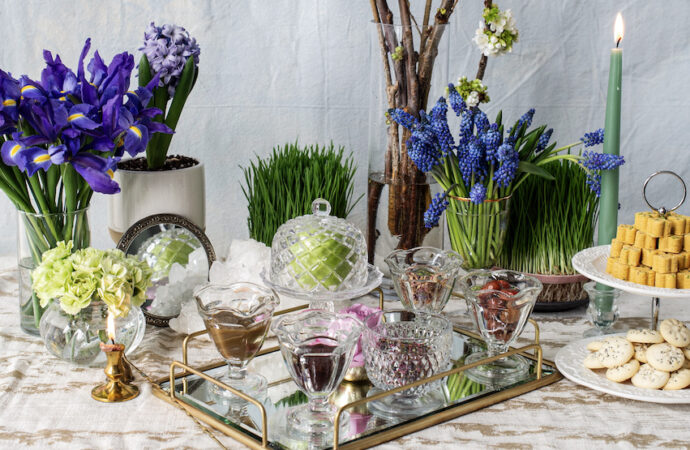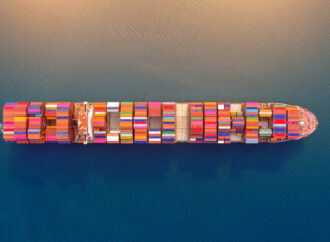Nowruz, also known as Persian New Year, has been observed for more than 3,000 years as the victory of spring over darkness. March 20 is the first day of spring in the Northern Hemisphere. But it’s also the start of a new year for 300 million people around the world. Nowruz, which means “new day,”
Nowruz, also known as Persian New Year, has been observed for more than 3,000 years as the victory of spring over darkness.
March 20 is the first day of spring in the Northern Hemisphere. But it’s also the start of a new year for 300 million people around the world. Nowruz, which means “new day,” is a holiday in Iran that marks the arrival of spring and the first day of the year. The solar calendar in Iran begins with the vernal equinox.
What Does Spring “Equinox” Mean, Exactly?
The word equinox comes from the Latin words for “equal night”—aequus (equal) and nox (night).
On the equinox, the length of day and night is nearly equal in all parts of the world.
With the equinox, enjoy an increasing amount of sunlight hours, with earlier dawns and later sunsets! See your personalized Sun rise and set calculator.

What Happens on the March Solstice?
The Sun crosses the celestial equator from south to north on the March equinox. The “celestial” equator is so named because it is an imaginary line in the sky above the Earth’s equator.
The Sun would pass directly overhead if you were standing on the equator on its way north.
For all of us on Earth, the equinoxes are the only two times a year when the Sun rises due east and sets due west!

While the Sun passes overhead, the Earth’s tilt is zero relative to the Sun, which means that the Earth’s axis does not point toward or away from the Sun. (However, keep in mind that the Earth never orbits upright, but is always tilted on its axis by approximately 23.5 degrees.)
The Northern Hemisphere begins to tilt toward the Sun after the spring equinox. Although the amount of daylight had been increasing each day after the winter solstice in most locations (the North Pole and Equator being exceptions), after the spring equinox, many places will experience more daylight than darkness on each 24-hour day. The amount of daylight each day will increase until the summer solstice in June when the longest period of daylight occurs.

Nowruz has been observed for over 3,000 years in Iran and the Persian diaspora. Its origins can be traced back to Zoroastrianism, a religion practiced in ancient Persia that saw the arrival of spring as a victory over darkness. The holiday survived the Islamic conquest of Persia in the seventh century and the decline of Zoroastrianism’s popularity, and it spread throughout history through the diaspora of Persian people. (This is how Persia became the world’s first true empire.)

Nowruz is traditionally celebrated on the vernal equinox, and many people start planning for it weeks in advance. People perform ritual dances and fill vessels in their homes with water, which is associated with health, in an attempt to ward off bad luck in the run-up to the holiday.
Many people celebrate Charshanbe Suri, a night when they jump over fire or bang spoons on doors to ward off bad luck, on the last Wednesday before Nowruz. People also go to cemeteries and leave offerings for the dead, whom some believe visit before the spring rites begin.

WHAT EXACTLY IS HAFTSEEN?
Hafseen, which translates to “The Seven S’s,” is a collection of items that every Iranian keeps in their homes as part of their Nowruz ritual. Each of these seven items has a meaning associated with spring and the beginning of a new year. The following are some of the most frequently used Haftseen items:
1. Sabzeh (Sprouted wheat grass): Symbolizes re-birth and greenery
2. Serkeh (Vinegar): Symbol of aging and wisdom
3. Senjed (Dried fruit of a lotus tree): Symbolizes love
4. Samanoo (Sweet wheat pudding): Represents affluence
5. Seeb (Apple): Symbol of health and fertility
6. Somagh (Sumac): Symbolizes the color or sunrise
7. Seer (Garlic): Symbolizes medicine

What food do people eat for Nowruz?
On the first day of Nowruz, families gather at the home of their oldest family member.
The traditional New Year meal includes sabzi polo mahi (rice mixed with herbs and served with white fish); ash reshteh (a thick green soup with noodles, chickpeas and beans); and kuku sabzi (vegetable frittata).
Pastries include baghlava, toot (mulberry); naan-nokhodchi (chickpea cookies with pistachio); and ajeel (dried berries and raisins).

How long does Nowruz last?
The festivities end 13 days after the New Year with Sizdeh Bedar, which can be translated as either “getting rid of 13” (a symbol of bad luck), or “to hit the road”.
On Sizdeh Bedar, people picnic in open fields, plains, parks, and riverbanks, bringing their meticulously grown sabzeh with them. They throw the sabzeh into the river or fields to symbolize giving back to nature.

Schools and offices usually re-open the following day.
 Magazine
Magazine 


















Leave a Comment
Your email address will not be published. Required fields are marked with *